Fairfax County Historic Courthouse and Jail
Introduction
Text-to-speech Audio
Images
Union Soldiers at the Fairfax County Courthouse in June 1863
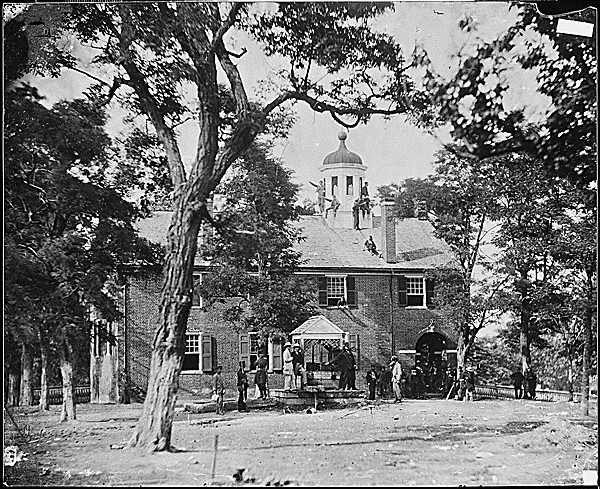
The Historic Fairfax County Courthouse (with the 12-Pounder Boat Howitzers and Captain John Q. Marr Monument in the foreground)
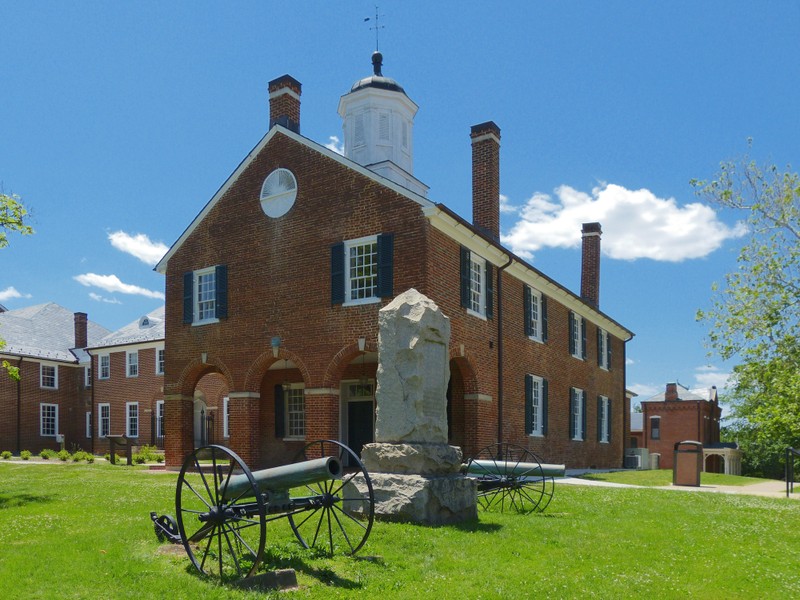
The Historic Fairfax County Courthouse
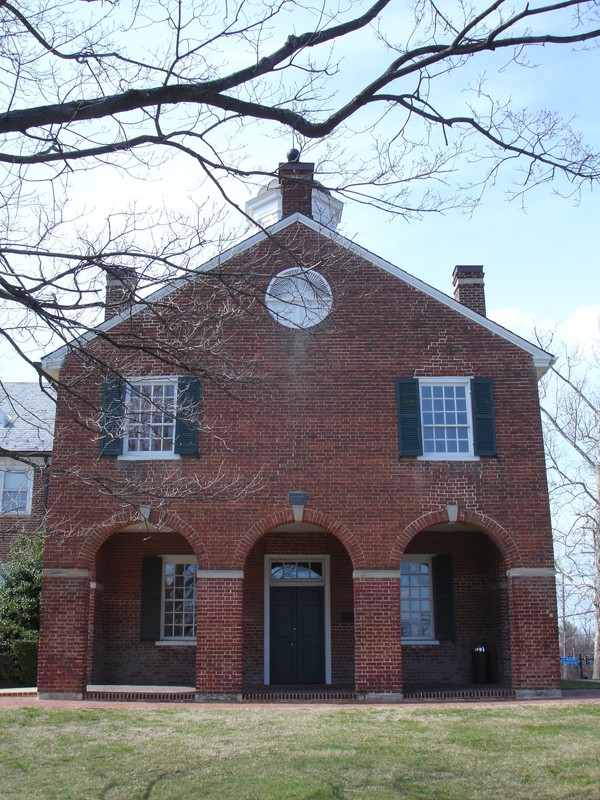
The Historic Fairfax County Courthouse
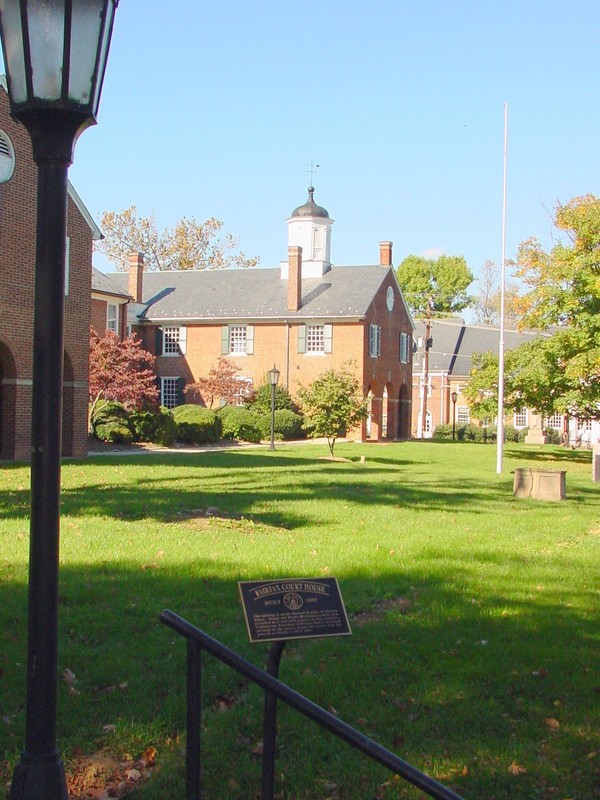
Inside the Historic Courthouse
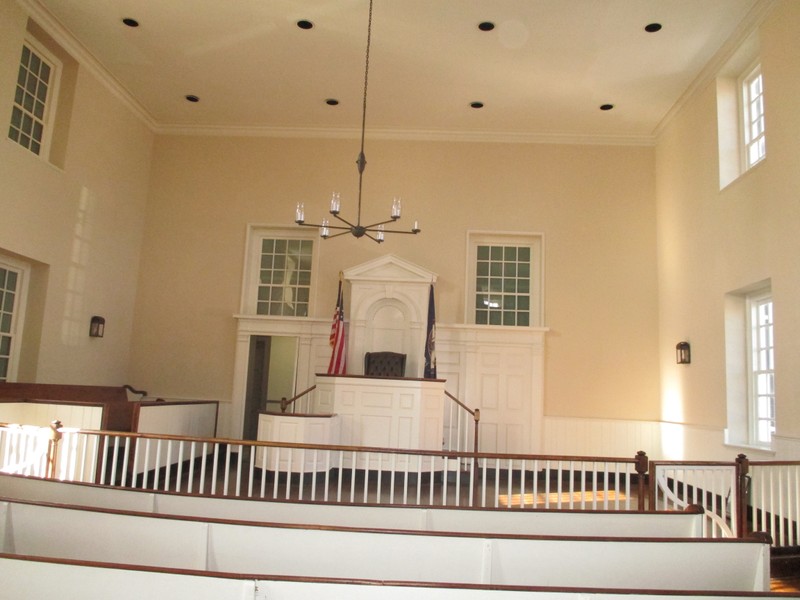
The Historic Fairfax County Jail
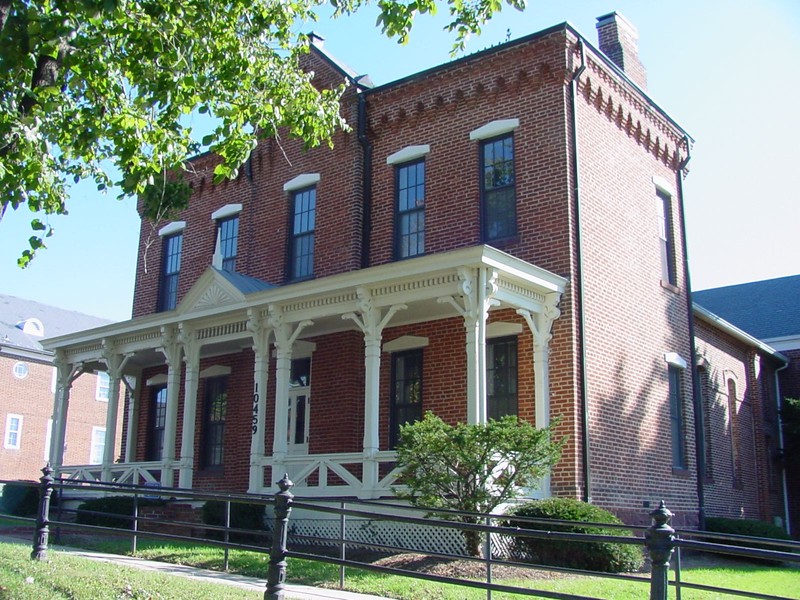
The Historic Fairfax County Jail
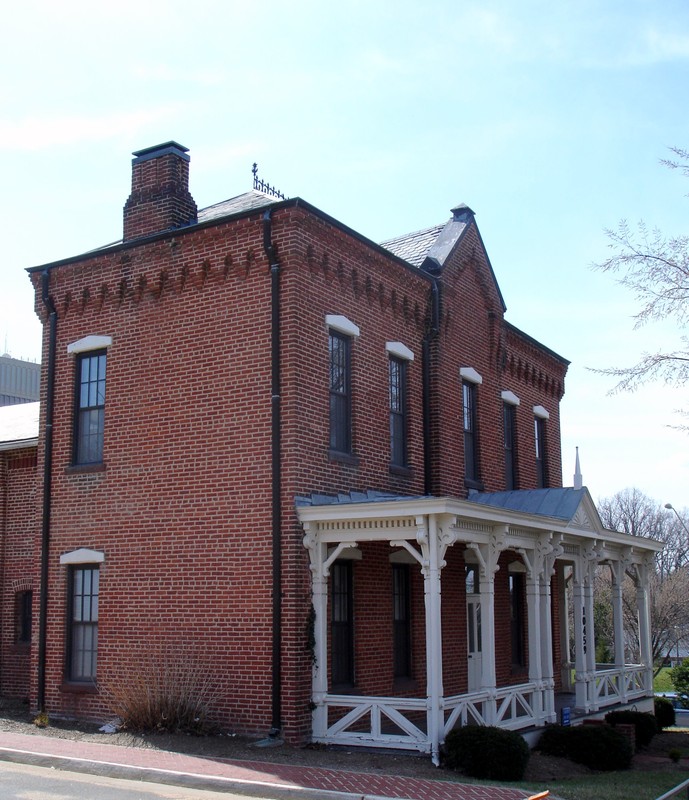
Backstory and Context
Text-to-speech Audio
Counties and county courts were the basic unit of local government during Virginia's colonial era. As such, when Prince William County was partitioned to create Fairfax County in 1742, the Governor in Council in Williamsburg gave the following order (as recorded in his official Journal):
Saturday, June ye 19th, 1742. . . .
ORDERED that the Court-house for Fairfax County be appointed at a place call'd Spring Fields situated between the New Church and Ox Road in the Branches of Difficult Run, Hunting Creek and Accotinck [sic].[3]
This early courthouse, located according to the order, was probably a log structure built on a stone foundation. The courthouse was soon moved to Alexandria, where it remained during the Revolutionary War. In 1798, it was relocated to the center of the county to be more convenient for citizens and better for business and commerce (and also because Alexandria had been incorporated into the United States' new national capital). James Wren was the architect for this new courthouse, which was constructed in 1799. Upon its completion, the first order of business was to record the will of Corbin Washington, the nephew of George Washington. This courthouse, located in what was originally known as Providence, later Fairfax Court House, and, finally, Fairfax City, served the Circuit Court until the 1980s and the Juvenile Court until 2008.
During the Civil War, the Fairfax County Courthouse changed hands several times between Union and Confederate forces. At first, Fairfax County aligned itself with the Confederacy, and citizens ratified the secession ordinance. Confederate troops soon after positioned themselves around the courthouse; the first Confederate officer death of the Civil War occurred when Captain John Quincy Marr was shot on June 1st, 1861, during the first Battle of Fairfax Court House. The courthouse came under Union control only July 17th, but was only held for five days, as the federal forces abandoned it in their retreat from the First Battle of Bull Run. Jefferson Davis visited the courthouse to meet with his generals and review troops in late September-early October 1861. Shortly thereafter, the rebel forces retreated to Centreville, abandoning Fairfax Court House. However, Union forces did not retake it until March 1862. The courthouse ultimately ceased all legal function and became a military outpost. On September 2nd, 1862, during the early stages of the Union retreat from northern Virginia and subsequent Confederate campaign in Maryland, cavalry under General Fitzhugh Lee took Fairfax Court House and held it until they joined the rest of the rebel army on September 10th. The courthouse remained in Union hands for the rest of the war. However, the troops were still harassed by Confederate raids, the most famous of which was conducted by Colonel John S. Mosby and his Rangers in March 1863. In addition, during "Stuart's Ride" through Prince William and Fairfax Counties into Maryland in June and July 1863, some of Confederate General J.E.B. Stuart's cavalry skirmished with a small Union force (the 11th New York Cavalry, also known as "Scott's 900") near Fairfax Court House on June 27th before moving through and sacking the town; this became known as the second Battle of Fairfax Court House.
The courthouse interior was in dire need of renovation at the end of the war; this work continued until around 1900. The benches in the courtroom were moved there from the Jerusalem Baptist Church sometime in the post-Civil War era. Another renovation was completed in 1920. The 1854 Clerk's Office was destroyed in 1930-31 to make space for an annex on the south side of the courthouse. A center section and identical wing were built between 1951 and 1953. The interior of the courthouse was practically rebuilt for the second time between 1964 and 1967, leaving only a single beam and two columns from the original structure.
Today, the Fairfax County Circuit Court Historic Records Center is located in the Historic Courthouse. It houses records from two centuries following the county's creation in 1742. These records include George and Martha Washington's original wills. In addition, on one Friday each month, the Circuit Court uses the Historic Courthouse to conduct civil motions.
The Italianate-style jail was completed in 1885 (with two later additions), after a fire destroyed its 1802 predecessor. It was used until 1953, when it was made redundant by a jail addition to the main courthouse. The old jail was afterwards used for a series of different county offices.
Sources
1) Coski, Ruth Ann. John Singleton Mosby (1833–1916), Encyclopedia Virginia. March 1st 2014. Accessed June 27th 2020. https://www.encyclopediavirginia.org/mosby_john_singleton_1833-1916.
2) David, Elizabeth S. Fairfax County Courthouse and Jail, Boundary Increase, National Register of Historic Places Inventory/Nomination Form, Virginia Historic Landmarks Commission (now the Virginia Department of Historic Resources). October 1st 1981. Accessed June 27th 2020. https://www.dhr.virginia.gov/wp-content/uploads/2018/04/151-0003-0001_Fairfax_County_CourthouseJail_1980_BI_Final_Nomination.pdf.
3) Hall, Wilmer (Ed.). Executive Journals of the Council of Colonial Virginia, Richmond: Virginia State Library, 1945. V. 93.
4) Historic Fairfax Courthouse - Civil Motions Schedule; Historic Records Center; Circuit Court, Fairfax County Virginia. Accessed June 27th 2020. https://www.fairfaxcounty.gov/circuit/historic-records-center/friday-motions.
5) Historic Fairfax Courthouse; Historic Records Center; Circuit Court, Fairfax County Virginia. Accessed June 28th 2020. https://www.fairfaxcounty.gov/circuit/historic-records-center/courthouse-history.
6) Historic Records Center; Circuit Court, Fairfax County Virginia. Accessed June 27th 2020. https://www.fairfaxcounty.gov/circuit/historic-records-center.
7) History of the Historic Records Center; Historic Records Center; Circuit Court, Fairfax County Virginia. Accessed June 27th 2020. https://www.fairfaxcounty.gov/circuit/historic-records-center/history.
8) Johnson, William Page, II. Charge of the Gray Devils. The Fare Facs Gazette: The Newsletter of Historic Fairfax City, Inc. Spring 2013. Volume 10, Issue 2. pp. 1, 3 - 17. Historic Fairfax City, Inc. Accessed June 28th 2020. https://www.historicfairfax.org/wp-content/uploads/2012/05/HFCI1002-2013.pdf.
9) Netherton, Ross. Waldeck, Ruby. The Fairfax County Courthouse, Fairfax County Office of Comprehensive Planning, July 1977. May 10th 2009. Project Gutenberg. Accessed March 31st 2016. http://www.gutenberg.org/ebooks/28750.
10) Prats, J. J. Browne, Allen C. Monument to John Q. Marr, HMdb.org. June 10th 2020. Accessed June 27th 2020. https://www.hmdb.org/m.asp?m=620.
11) Prats, J. J. Old Fairfax Jail, HMdb.org. July 14th 2019. Accessed June 27th 2020. https://www.hmdb.org/m.asp?m=6256.
12) Swain, Craig. Browne, Allen C. Fairfax County Courthouse: War on the Courthouse Grounds, HMdb.org. June 16th 2016. Accessed June 28th 2020. https://www.hmdb.org/m.asp?m=43134.
13) Trexler, Edward C., Jr. Changing Hands, Fairfax Court House. The Fare Facs Gazette: The Newsletter of Historic Fairfax City, Inc. Summer 2012. Volume 9, Issue 3. pp. 1, 3 - 7. Historic Fairfax City, Inc. Accessed June 28th 2020. https://www.historicfairfax.org/wp-content/uploads/2012/05/HFCI93-2012.pdf.
14) Virginia Historic Landmarks Commission Staff. Fairfax County Court House, National Register of Historic Places Inventory/Nomination Form, Virginia Historic Landmarks Commission (now the Virginia Department of Historic Resources). May 3rd 1974. Accessed June 27th 2020. https://www.dhr.virginia.gov/wp-content/uploads/2018/04/151-0003-0001_Fairfax_County_Courthouse_1973_Final_Nomination.pdf..
By Timothy H. O'Sullivan at NARA via Wikimedia Commons - Public Domain (https://commons.wikimedia.org/wiki/File:Union_Soldiers_Fairfax_County_Courthouse.gif)
By Allen C. Browne on HMdb.org (https://www.hmdb.org/PhotoFullSize.asp?PhotoID=277405)
On HMdb.org (https://www.hmdb.org/PhotoFullSize.asp?PhotoID=18702)
By J. J. Prats on HMdb.org (https://www.hmdb.org/PhotoFullSize.asp?PhotoID=1743)
By William Barnard on HMdb.org (https://www.hmdb.org/PhotoFullSize.asp?PhotoID=304816)
By J. J. Prats on HMdb.org (https://www.hmdb.org/PhotoFullSize.asp?PhotoID=1749)
On HMdb.org (https://www.hmdb.org/PhotoFullSize.asp?PhotoID=1749)
